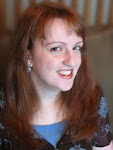Lina is just like any other fifteen-year-old Lithuanian girl in 1941. She paints, she draws, she gets crushes on boys. Until one night when Soviet officers barge into her home, tearing her family from the comfortable life they've known. Separated from her father, forced onto a crowded and dirty train car, Lina, her mother, and her young brother slowly make their way north, crossing the Arctic Circle, to a work camp in the coldest reaches of Siberia. Here they are forced, under Stalin's orders, to dig for beets and fight for their lives under the cruelest of conditions. Lina finds solace in her art, meticulously - and at great risk - documenting events by drawing, hoping these messages will make their way to her father's prison camp to let him know they are still alive. (Goodreads)
Reviewed by Kim Harris Thacker: writer, mommy, and Bookshop Talk host
Some books are easy to review, some books are hard. This one falls into the latter category. It was a heart-wrenching read. But it was also chock full of hope and beauty.
About a year or so ago, I read Elie Weisel's NIGHT, which is a memoir about his experience enduring and surviving the Holocaust. It was horrifying, but I didn't begrudge Weisel's desire to relate the blunt horrors he experienced. I would never presume to say that it's not important to talk about things as they really are or were, without any "stage makeup" hiding all the ugliness. And perhaps people need to be shocked out of their comfort zones in order to comprehend things that have actually happened. I'm not sure, though after reading BETWEEN SHADES OF GRAY, I think that's probably not the case. But I do know that it hurts my heart to read books like NIGHT. I had a very, very difficult time with that book. When I opened BETWEEN SHADES OF GRAY, which, though it is about the effects of Josef Stalin's Reign of Terror upon the people of the Baltic region, feels quite similar to a Holocaust story, I didn't expect a heartwarming tale. I did hope for one.Some books are easy to review, some books are hard. This one falls into the latter category. It was a heart-wrenching read. But it was also chock full of hope and beauty.
Generally, with fiction, I feel like I'm a step away from the things I witness in the story. I'm a "safe" distance from conflict. But with non-fiction or memoir, I feel like I'm in the thick of things, and this can be a very uncomfortable feeling. Because BEWEEN SHADES OF GRAY is based on history, I felt like I was somewhere in the middle. I love historical fiction, and I believe that it's so very important to read literary works that are birthed from history. I enjoyed the book much more than I would have enjoyed it had it been autobiographical, because I wasn't so absorbed in the book that it affected my life (yes, I love books that much). I knew that it was an important book--one that told a story that might not ever be told, otherwise.
Until 1991, people in the Baltic region who had suffered from the effects of the Soviet occupation couldn't openly speak about what they had endured, because they could be imprisoned. This is an important book. Something is being said (in the guise of fiction) to a young adult audience about the deportation and genocide of so many millions of people--a people that were basically forgotten for fifty years. I think it's beautiful that this is a YA novel. It closes with these words:
Evil will rule until good men or women choose to act....This testimony was written to create an absolute record, to speak in a world where our voices have been extinguished. These writings may shock or horrify you, but that is not my intention. It is my greatest hope that [these] pages...stir your deepest well of human compassion. I hope they prompt you to do something, to tell someone. Only then can we ensure that this kind of evil is never allowed to repeat itself.
Though this quote comes in the form of a letter that is discovered by a character who appears at the end of the book, it is as though the author is speaking to her reader--her YA audience (or the old gals like me who read and love YA). Don't be fooled by where this book is shelved in your library. Though it's fiction, it's truth.
I've spent a lot of time in this review on the plot of the book and on the history behind the plot, but let me also say that the writing is wonderful. And the characters are wonderful. At one point, a little girl in the story whose doll has been "murdered" by Soviet soldiers, tells the other characters that her doll speaks to her from heaven and then proceeds to say and do things that would be impossible unless that were actually true. It's that kind of character-writing that brings these wonderful, suffering people (one of whom is actually a "bad guy" throughout most of the novel) into the heart of the reader.
Here are a couple of favorite passages that show how amazing these characters are:
(After the little girl in the story claims her doll showed her a dead owl that could be hidden and eaten, and the main character hides the owl under her thin coat)
(The mother of the main character reprimands her daughter for speaking unkindly about a fellow deportee who has been mean to everyone for many, many months)People I didn't know formed a circle around me, sheltering me from view. They escorted me safely back to our jurta [hut], undetected. They didn't ask for anything. They were happy to help someone, to succeed at something, even if they weren't to benefit. We'd been trying to touch the sky from the bottom of the ocean. I realized that if we boosted one another, maybe we'd get a little closer.
"Lina, think of what your father would say. A wrongdoing doesn't give us the right to do wrong. You know that."
Please don't think that these "feel good" passages aren't deserved. There is so much of suffering in this story. Any glimmer of hope or any kind word is so, so heart-felt and so needed. It's really lovely writing, and the characters are just amazing.
I recommend this book to mature audiences (YA and up--there is some violence and a lot of death), particularly teachers and homeschooling parents, or anyone else who wishes to guide young people to learn more about the past. Also, I recommend reading this book in combination with Eugene Yelchin's BREAKING STALIN'S NOSE, which is about a young man growing up in Moscow during the Reign of Terror.
A final note: Ruta Sepetys was a recent finalist for the William C. Morris award, "for a debut book published by a first-time author writing for teens." She was Cybils(Children's and Young Adult Bloggers Literary Awards) award finalist in 2011 for BETWEEN SHADES OF GRAY, and she also received a General Work-in-Progress Grantfrom the Society of Children's Book Writers and Illustrators in 2007.
MARKET: YA Historical Fiction
LANGUAGE: Mild
VIOLENCE: Moderate-Extreme (Nothing you wouldn't expect from a novel with this subject matter.)
SENSUALITY: Moderate (Without giving anything away, there is a character who agrees to prostitute herself in order to protect others. Also, some guards treat some of the women rather badly. Nothing is explicit.)
MATURE THEMES: Everything. This is not subject matter for young children. There is genocide, slave labor under the worst of circumstances, murder, physical and mental abuse, prostitution, etc. But please note that for all that, this is a book about human goodness and hope.
LANGUAGE: Mild
VIOLENCE: Moderate-Extreme (Nothing you wouldn't expect from a novel with this subject matter.)
SENSUALITY: Moderate (Without giving anything away, there is a character who agrees to prostitute herself in order to protect others. Also, some guards treat some of the women rather badly. Nothing is explicit.)
MATURE THEMES: Everything. This is not subject matter for young children. There is genocide, slave labor under the worst of circumstances, murder, physical and mental abuse, prostitution, etc. But please note that for all that, this is a book about human goodness and hope.
Hardcover
e-book

































